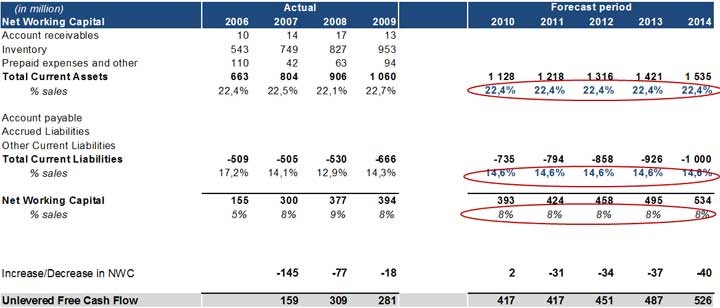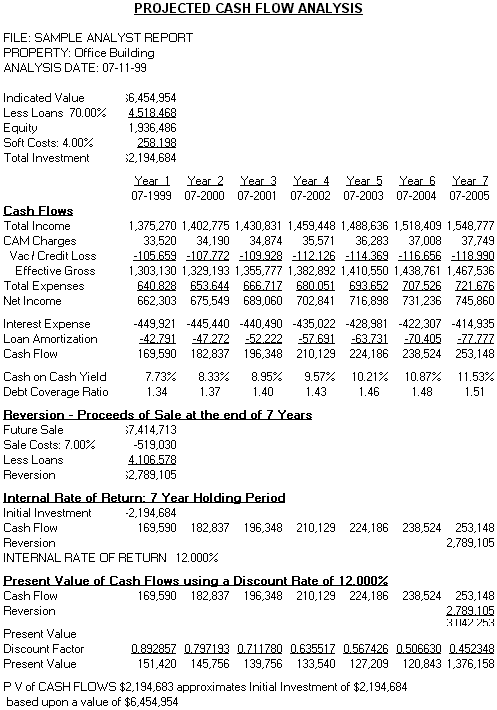How to calculate discounted cash flow (DCF)
Post on: 24 Май, 2015 No Comment

Corporate finance. MBA topics. Personal finance
Suppose I offered to give you either $1000 in June 2006 or $150 every June for the next 10 years, starting in 2007. Which offer is worth more? How would you figure this out? The answer is: by calculating discounted cash flows.
Discounted Cash Flow or DCF analysis is one of the first things taught in finance class in an MBA program. Its a natural consequence of the time value of money. which states essentially that a dollar today is not worth the same as a dollar in the future. Discounted Cash Flow analysis is most commonly used to value a project or company (or lottery payout, as in the simple example above) using a discount rate or weighted average cost of capital. also abbreviated as WACC. (Did I forget to mention finance is big on acronyms?)
Determining an appropriate discount rate or WACC can get complicated, so for now, well just simplify it and call it a percentage rate that we use to discount future cash flows to the present. For example, if you earned $100 every year, you can imagine that the $100 you earn 10 years from now wont be worth the same as the $100 you earn this year. Inflation, the return you could be getting on the $100 during that time, risk, all sorts of aspects can play into evaluating what $100 in 2016 is worth in 2006.
If youre working in corporate finance, chances are Treasury or some other official department has dictated an official cost of capital to use in your analysis. On this site, when I calculate Experiments in Finances NPV each month, I choose to use an annual rate of 5% as my discount rate, remembering to change this to its the monthly equivalent rate since Im calculating monthly cash flows. My reasoning is that the cash flows for this project arent large, and a comparable activity of similar risk might be to put the money in a savings account instead. This is one of those situations where finance is more like art than science. You could argue til you were blue in the face about what the right cost of capital to use should be, but in the end it may not matter too much, especially if you conduct a sensitivity analysis using different rates.
Lets get back to talking about DCFs. Discounted cash flow analysis essentially takes the cash flows for each period and discounts them back to the current moment. So, suppose we have cash flows of $100 starting next year for the next 10 years, and our discount rate is 8%. Then what were calculating looks like the following:
DCF = $100/(1+0.08) + $100/(1+0.08) 2 + $100/(1+0.08) 3 + + $100/(1+0.08) 10
(In this particular case, weve set a constant $100 per year as our cash flow. If we were receiving different amounts each year instead, say, $100 every year, except for $150 in year 2 and $1000 in year 10, then wed simply plug in those amounts instead in their respective years.)

What youre doing is essentially bringing back the future cash flow to the present time, using the discount rate of 8%. This means that the value of receiving $100 every year for 10 years isnt $1000 but $671. In fact, receiving $100 at the end of this year isnt the same as having the cash in your at the beginning of the year. Its worth $100 less the amount you would have earned in interest had you had it at the beginning of the year. And the $100 you earn two years from now is worth $100 less the amount you would have earned in compound interest over the two years. And so on. This is why wise articles about how much you need to save for retirement often result in seemingly large amounts.
Getting back to our original example, it turns out that if you assume a discount rate (which might represent the constant interest rate you can earn on your money) of 8%, then having $1000 in your pocket now versus having $150 for the next 10 years is the same. But if you assume that you can only earn 5%, then the stream of income is a better deal ($130 per year is the breakeven).
Discounted cash flow analysis is the basis of many things in finance, including Net Present Value or NPV. bond prices, annuity pricing, and many more. NPV and DCF calculations are one of the most frequently used finance tools for valuation purposes. But, like everything else, they have their limitations and are simply tools. If your numbers arent accurate to begin with, adding and dividing them will only result in a worse answer. DCFs and NPVs are also pretty inflexible. If future earnings and cash flows are very uncertain, or management has the option of changing a project midway through, then this type of analysis may not be the best way to go. In those cases, Real options or Monte Carlo might be more complex but better tools to use.
***************************************************














